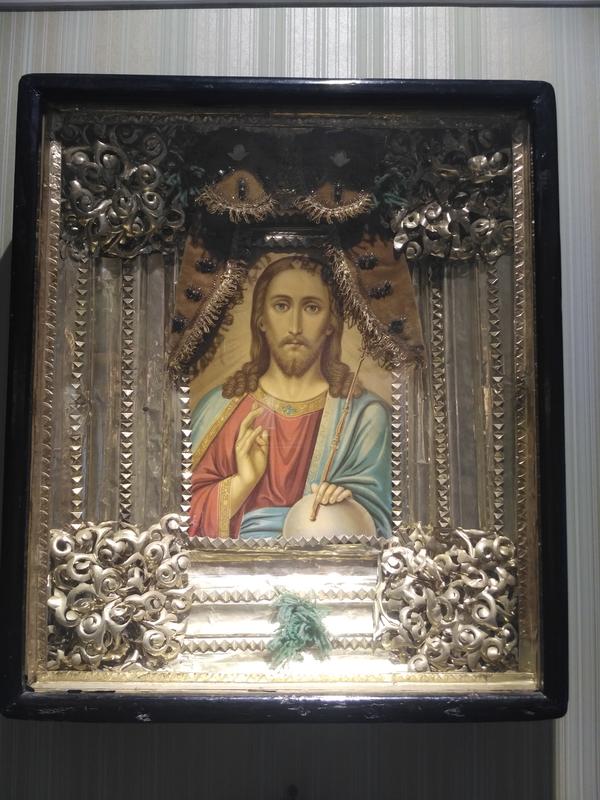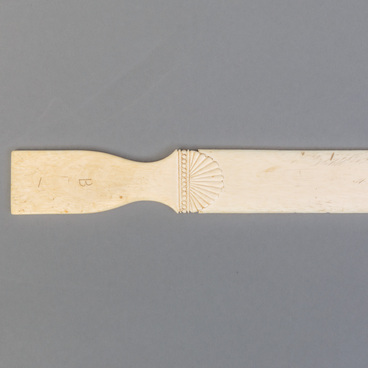In the Orthodox iconography there are numerous versions of the image of the Savior. Among them Vernicle and Crist Pantocrator have been the most revered ones from time immemorial. It is the image of Pantocrator that is most frequently depicted in the central part of the dome of Orthodox churches. It exists both as a single icon and as part of the deesis rows.
The figure of Jesus sitting atop the throne is always painted strictly in frontal view, in full- or half-length or chest-high. The fingers of the right hand are folded in a Christ’s blessing, forming the shape of his initials in Greek letters IC XC; the left hand may hold a scroll, a Gospel or a sign of supreme power — a scepter and an orb (with or without a cross). The Savior sometimes has a crown on his head and may be holding either an orb alone or an orb with a scepter. The combination of the simple garments and the insignia of royalty, including the throne, refers back to the Revelation of Saint John the Theologian, to the words that judgment will be rendered by Christ, for “the Father judges no one, but has given all judgment to the Son” as the Son of man (John 5:22).
The color symbolism of the garments remains unchanged: a red chiton and a blue or navy- blue himation. Blue (navy-blue) traditionally refers to the heavenly, divine origin. The symbolism of the red color is manifold: it is the color of blood sacrifice and of the king’s garment. Together, these colors signify the union of the divine essence and the human incarnation of Christ.
It is common to turn to the icon of Pantocrator in search of faith and consolation, help in overcoming difficulties and finding harmony and peace in the family, and also to express joy and gratitude.
Traditionally, icons were placed in the “red corner” in the eastern part of the room, so that all family members could gather for prayer in front of the holy images. The red corner was kept clean and it was to be decorated for church festivals. No secular books, photographs or paintings were to stand next to icons.
A certain hierarchy developed as to the placement of the icons in the home iconostasis. The central place was reserved for the holy faces of the Mother of God and Jesus Christ. A higher position was given to icons of the Holy Trinity, and on the sides were icons of patron saints or the images of saints especially revered in the family.
The figure of Jesus sitting atop the throne is always painted strictly in frontal view, in full- or half-length or chest-high. The fingers of the right hand are folded in a Christ’s blessing, forming the shape of his initials in Greek letters IC XC; the left hand may hold a scroll, a Gospel or a sign of supreme power — a scepter and an orb (with or without a cross). The Savior sometimes has a crown on his head and may be holding either an orb alone or an orb with a scepter. The combination of the simple garments and the insignia of royalty, including the throne, refers back to the Revelation of Saint John the Theologian, to the words that judgment will be rendered by Christ, for “the Father judges no one, but has given all judgment to the Son” as the Son of man (John 5:22).
The color symbolism of the garments remains unchanged: a red chiton and a blue or navy- blue himation. Blue (navy-blue) traditionally refers to the heavenly, divine origin. The symbolism of the red color is manifold: it is the color of blood sacrifice and of the king’s garment. Together, these colors signify the union of the divine essence and the human incarnation of Christ.
It is common to turn to the icon of Pantocrator in search of faith and consolation, help in overcoming difficulties and finding harmony and peace in the family, and also to express joy and gratitude.
Traditionally, icons were placed in the “red corner” in the eastern part of the room, so that all family members could gather for prayer in front of the holy images. The red corner was kept clean and it was to be decorated for church festivals. No secular books, photographs or paintings were to stand next to icons.
A certain hierarchy developed as to the placement of the icons in the home iconostasis. The central place was reserved for the holy faces of the Mother of God and Jesus Christ. A higher position was given to icons of the Holy Trinity, and on the sides were icons of patron saints or the images of saints especially revered in the family.



